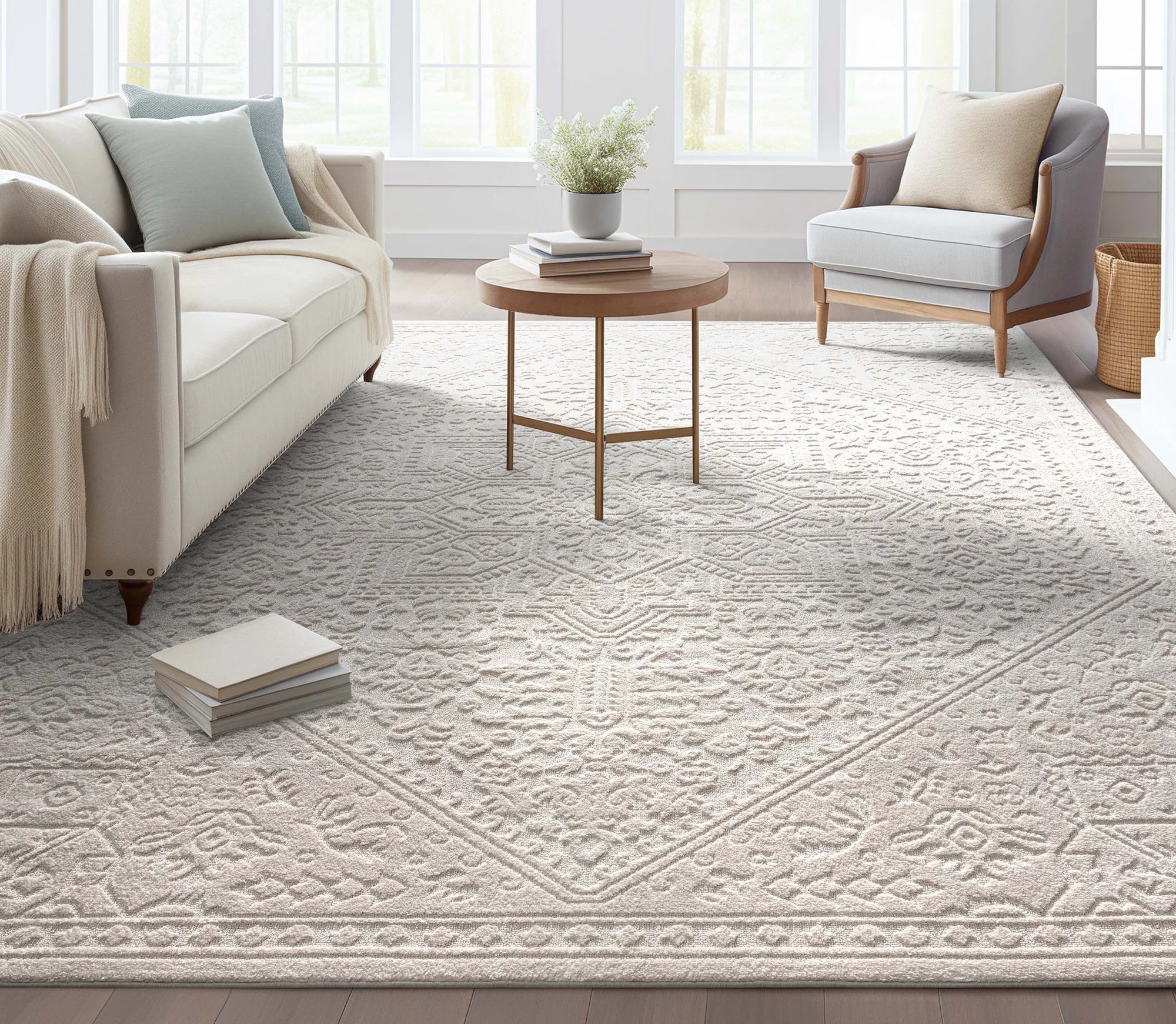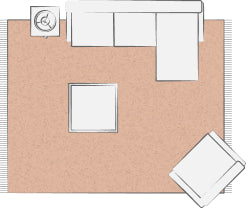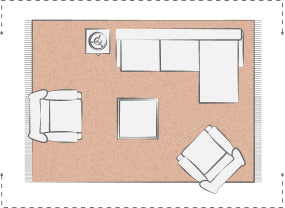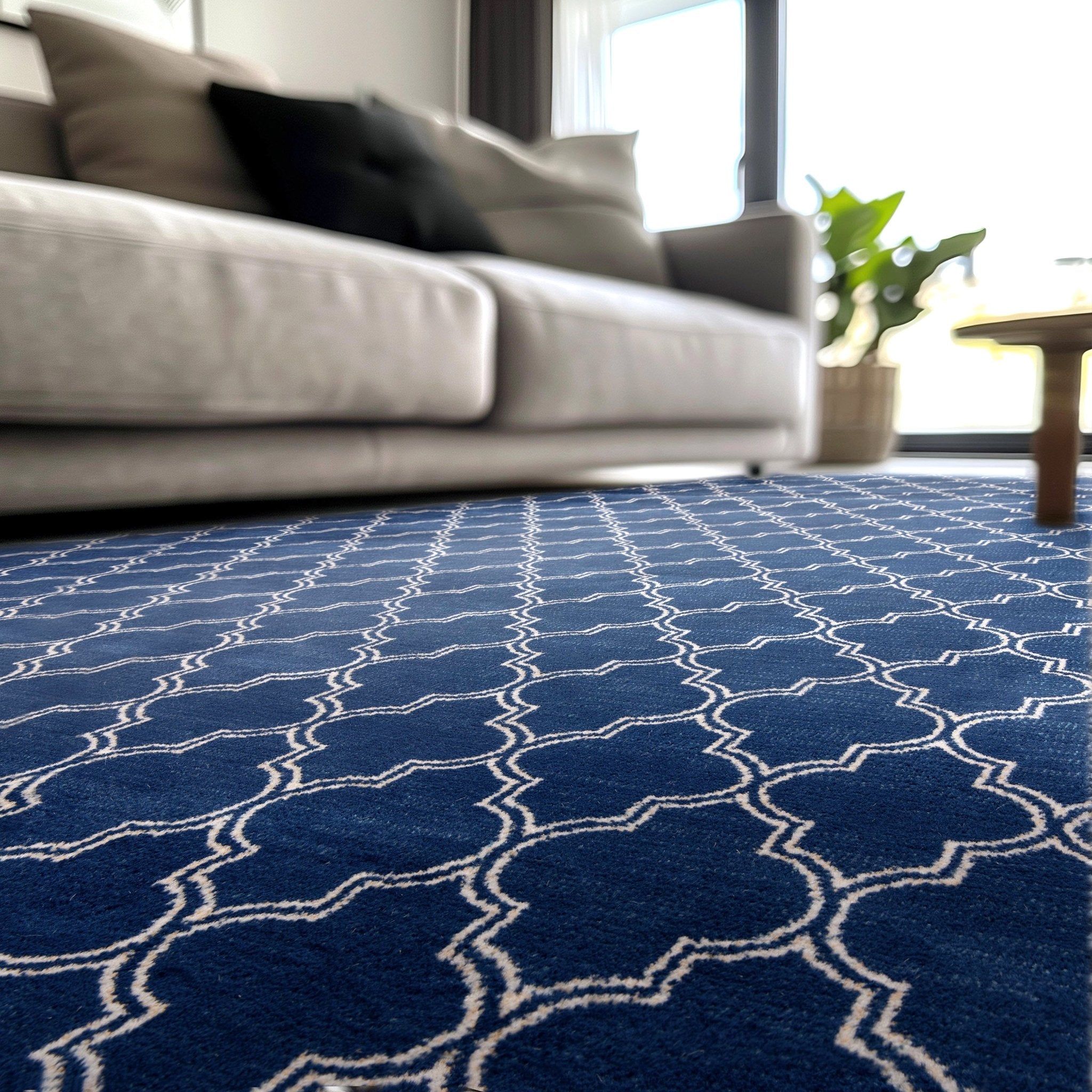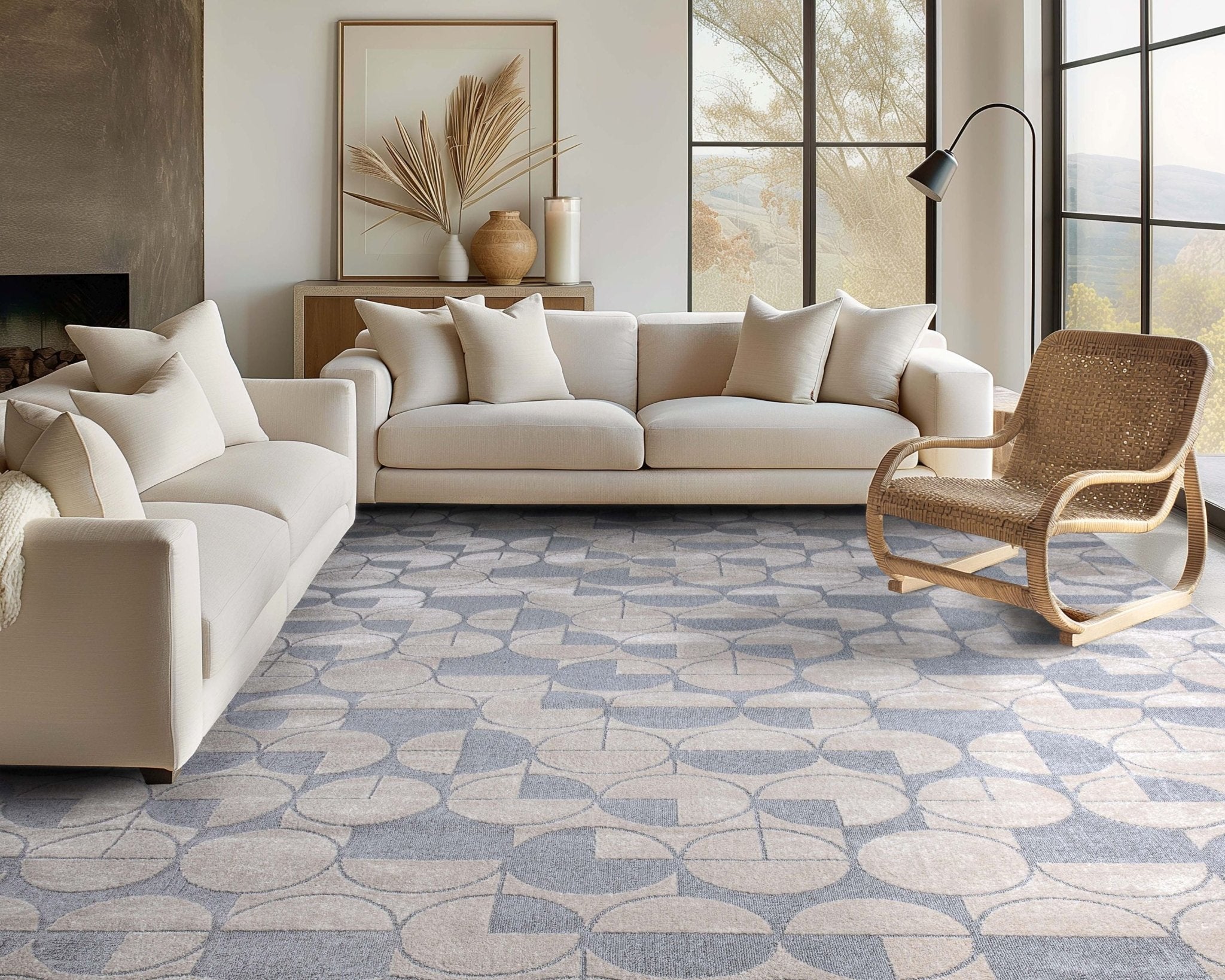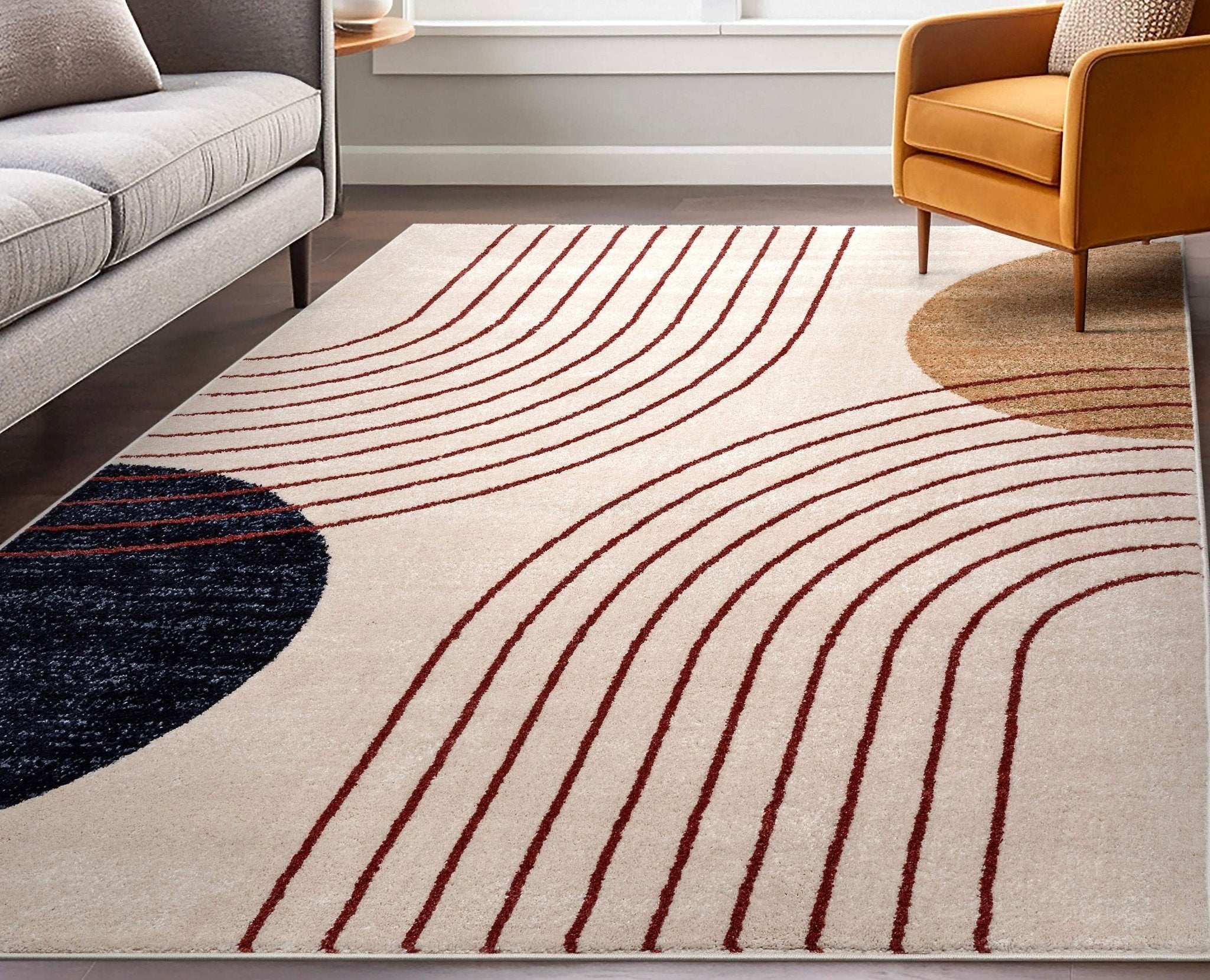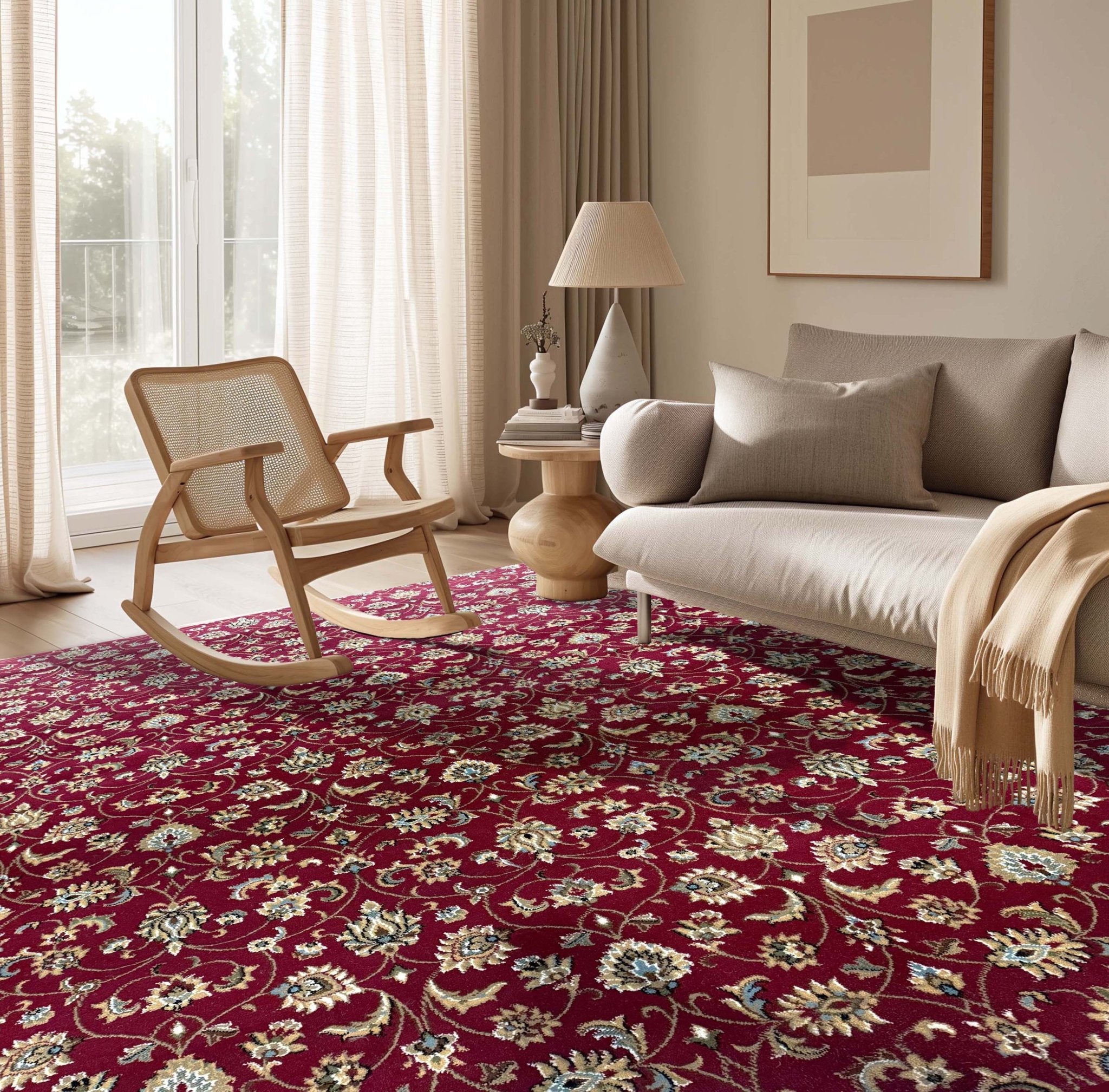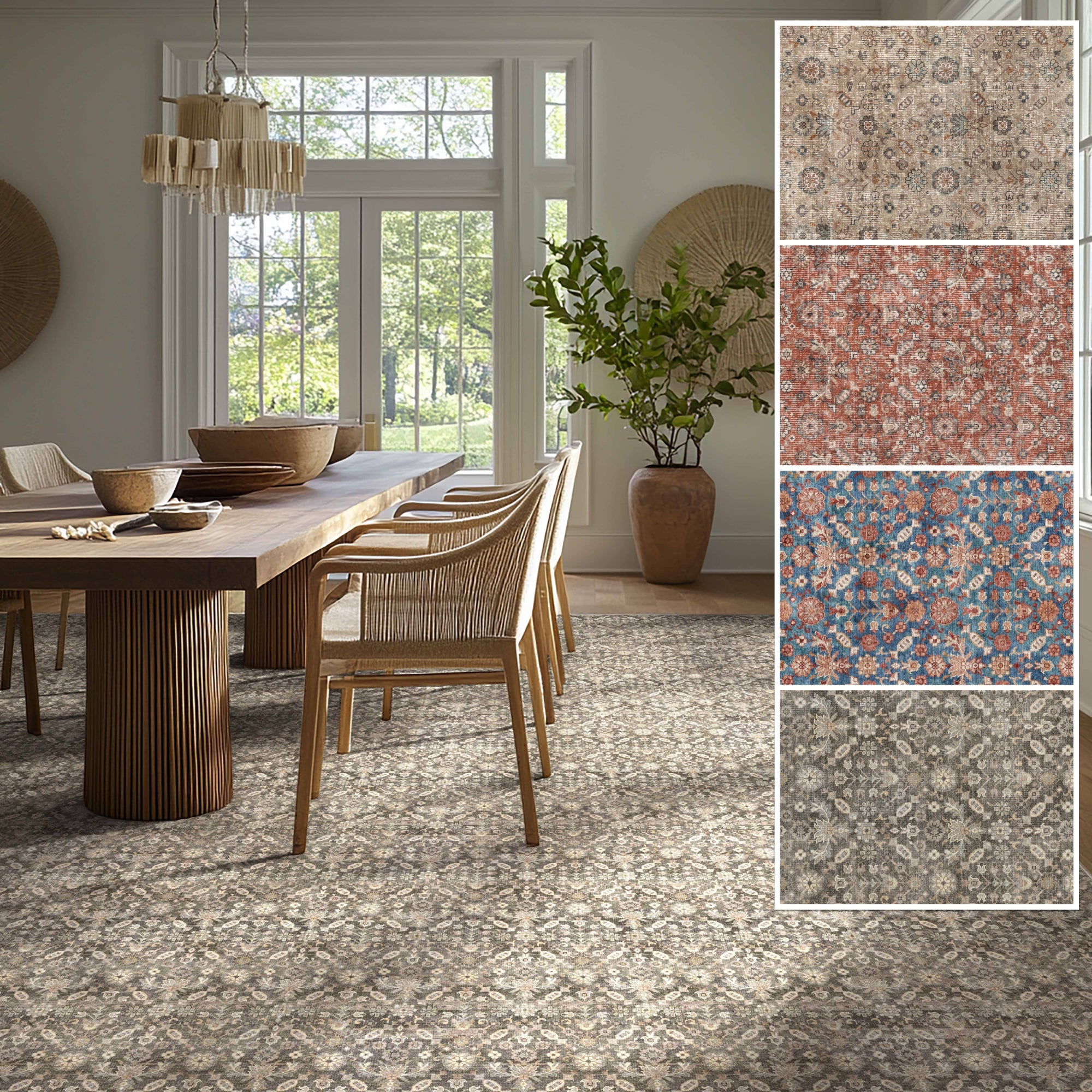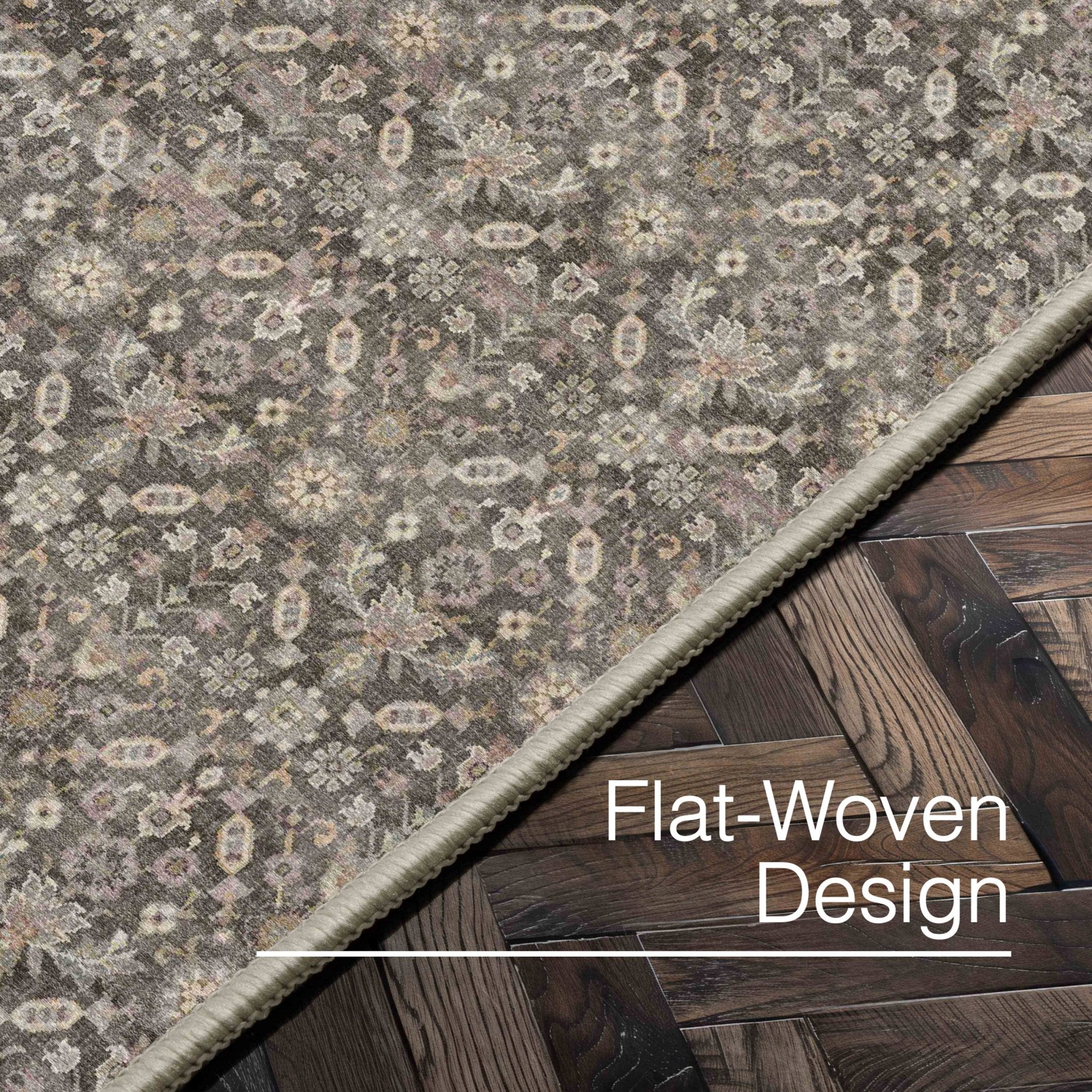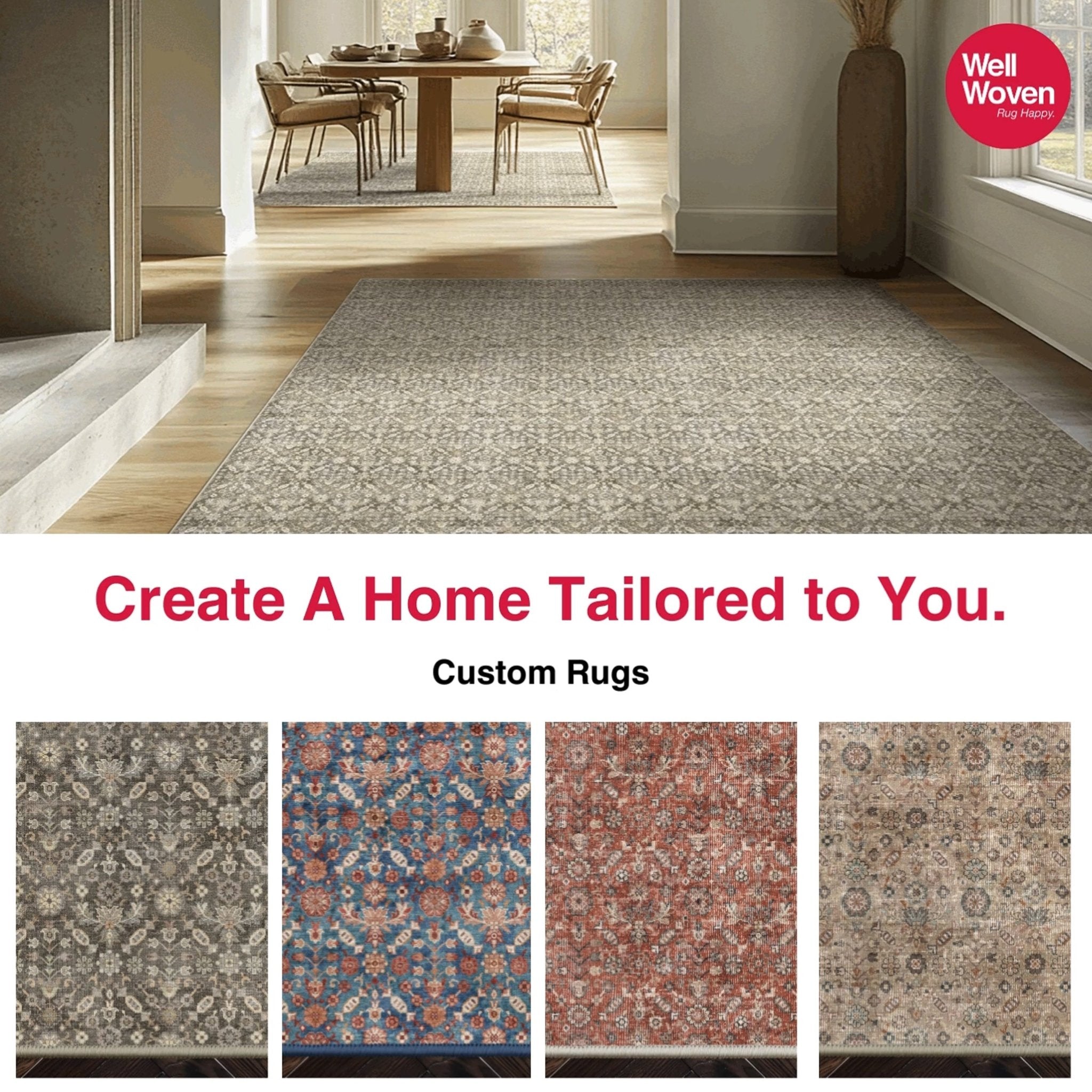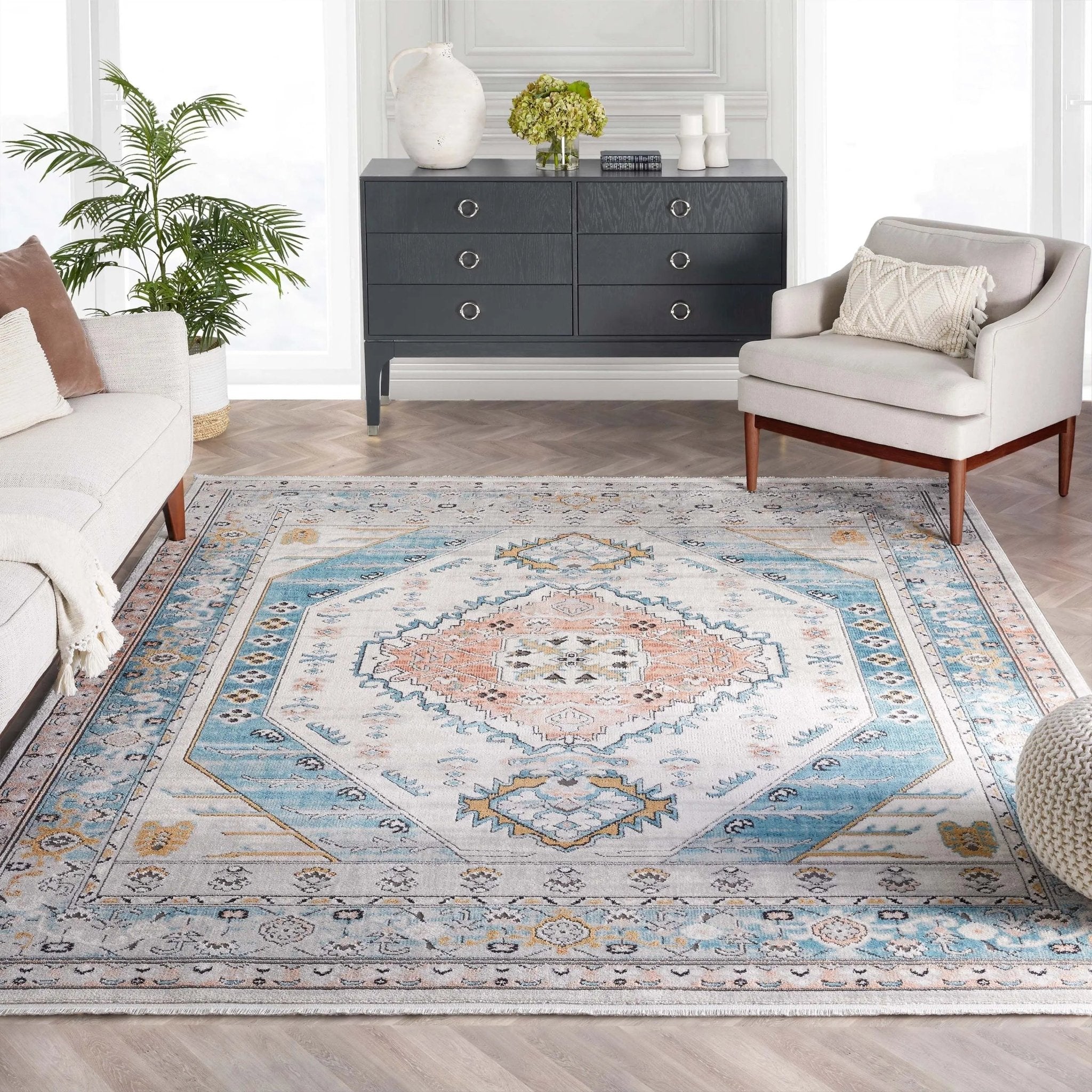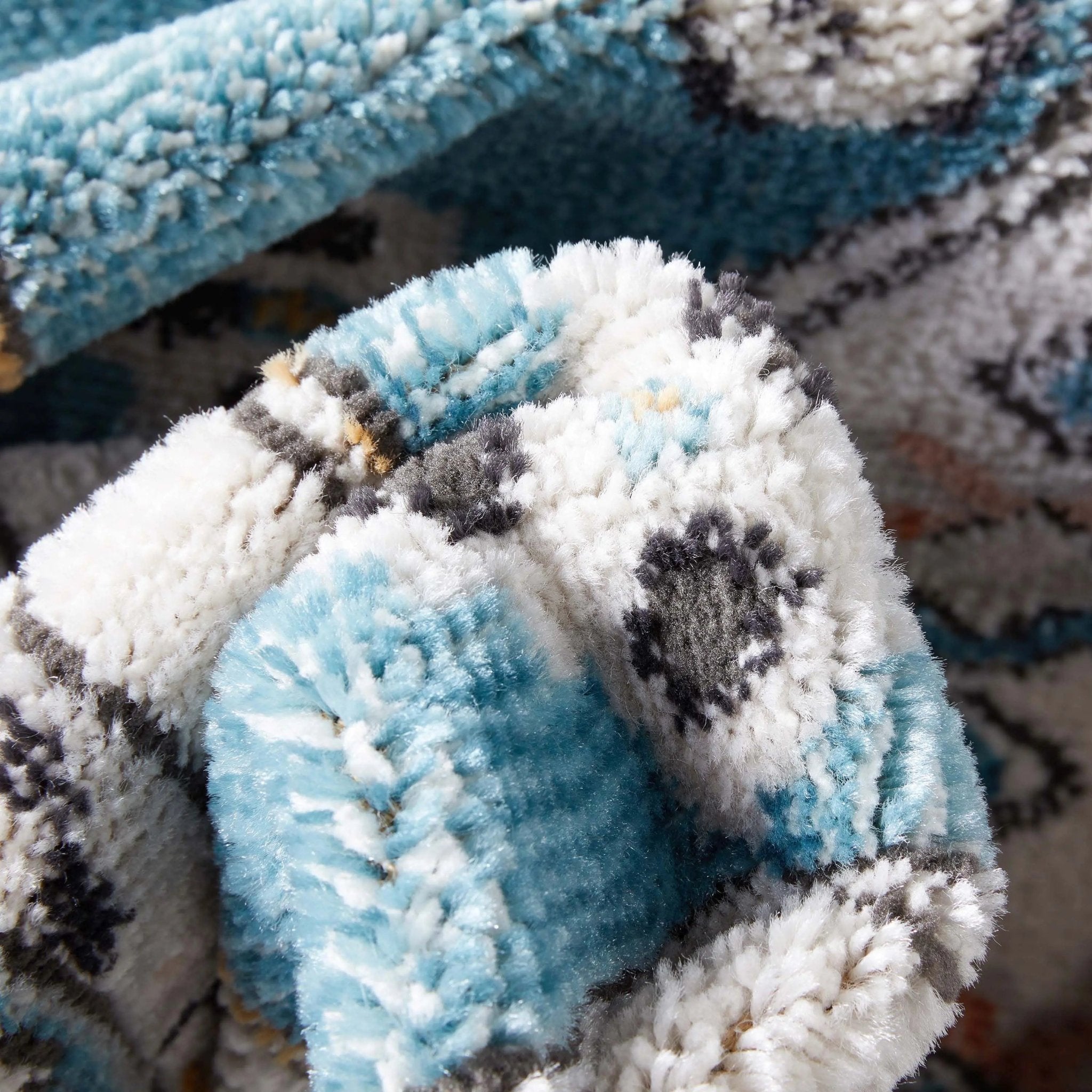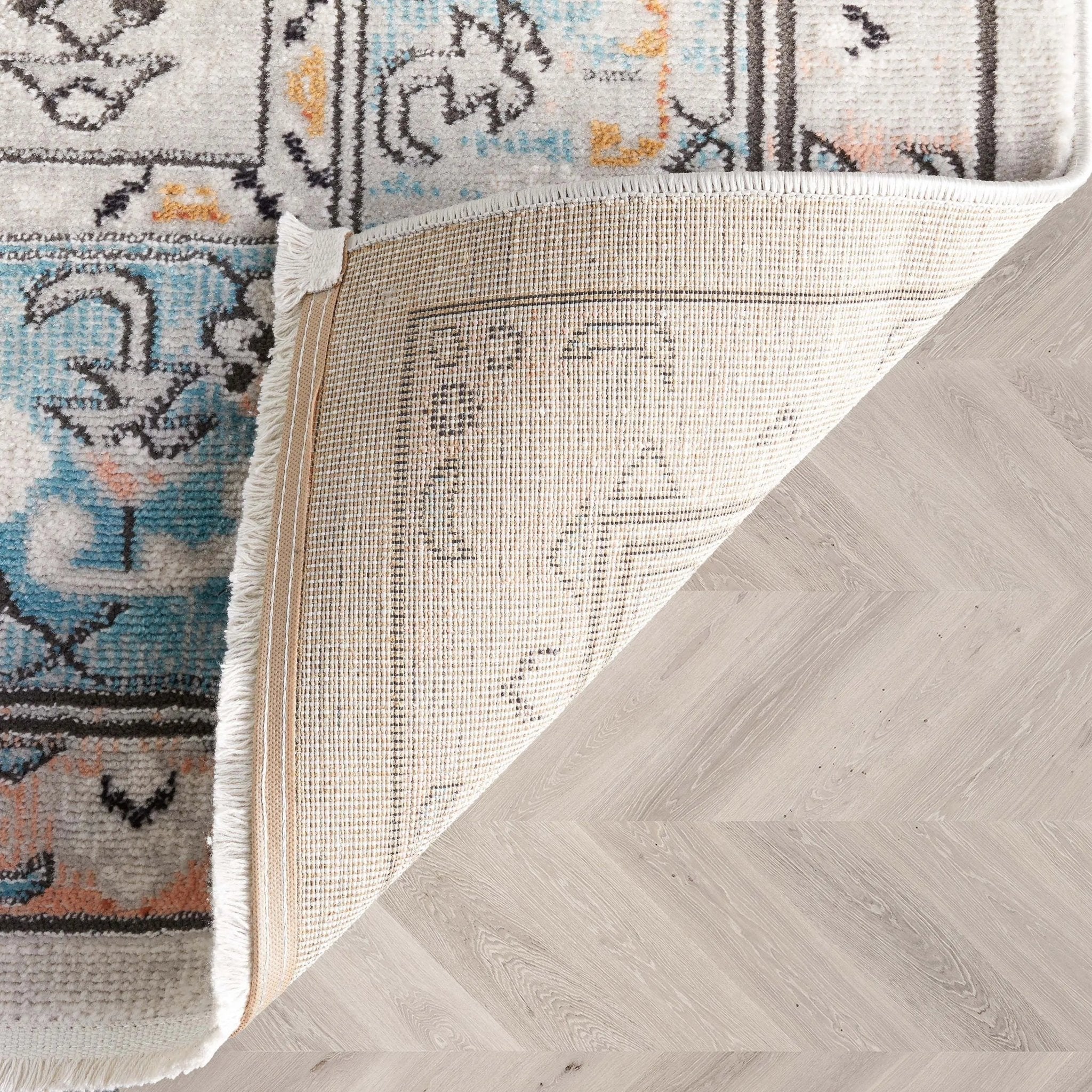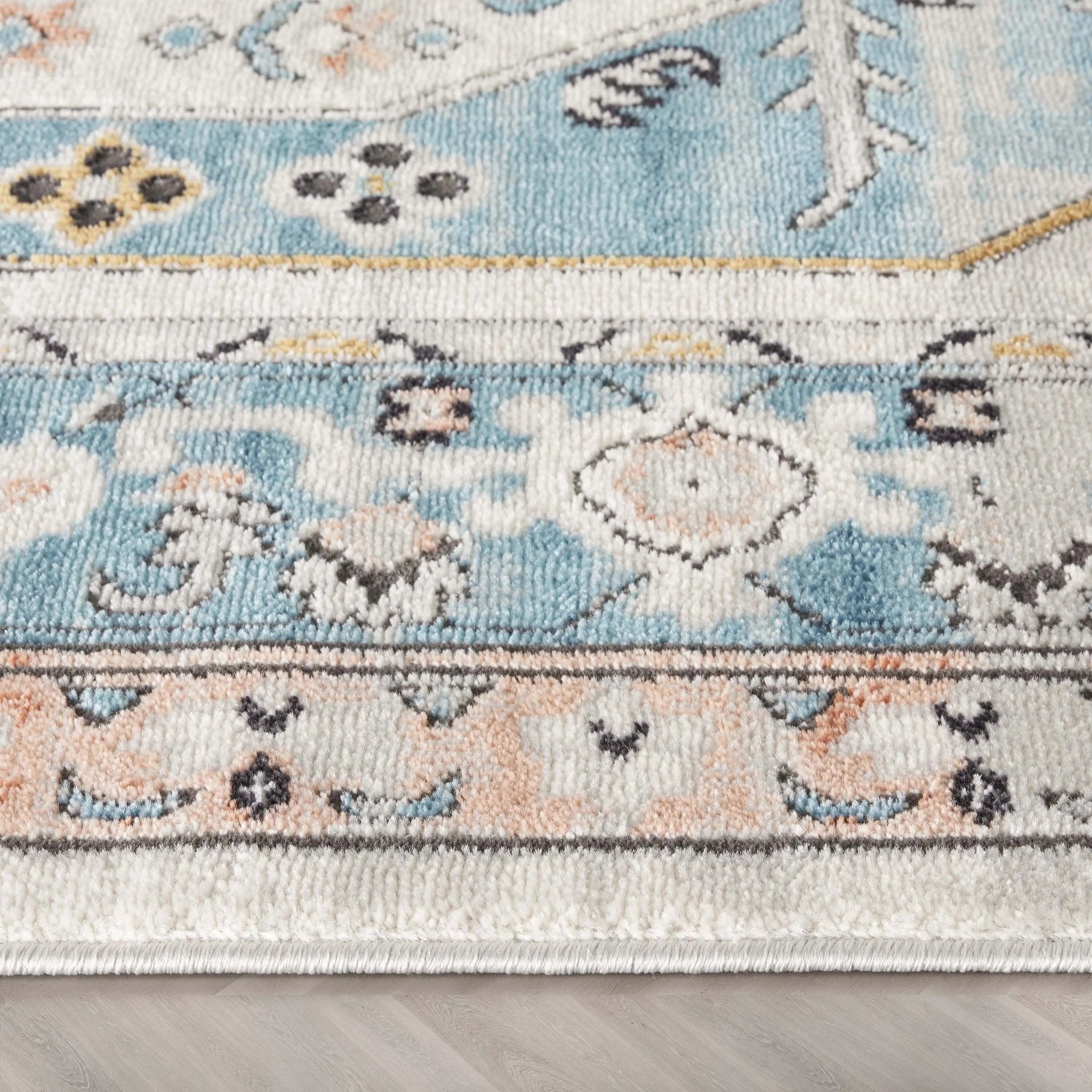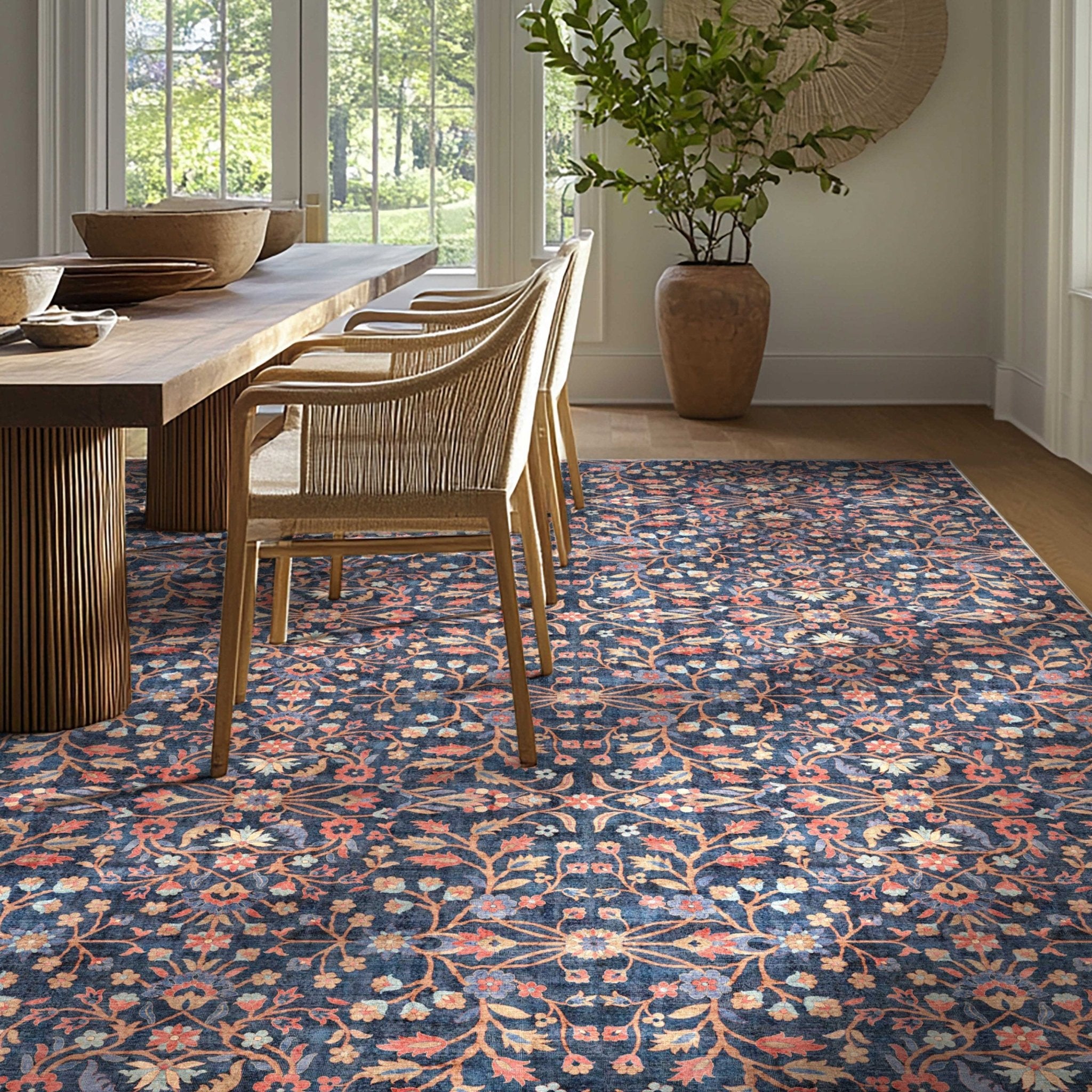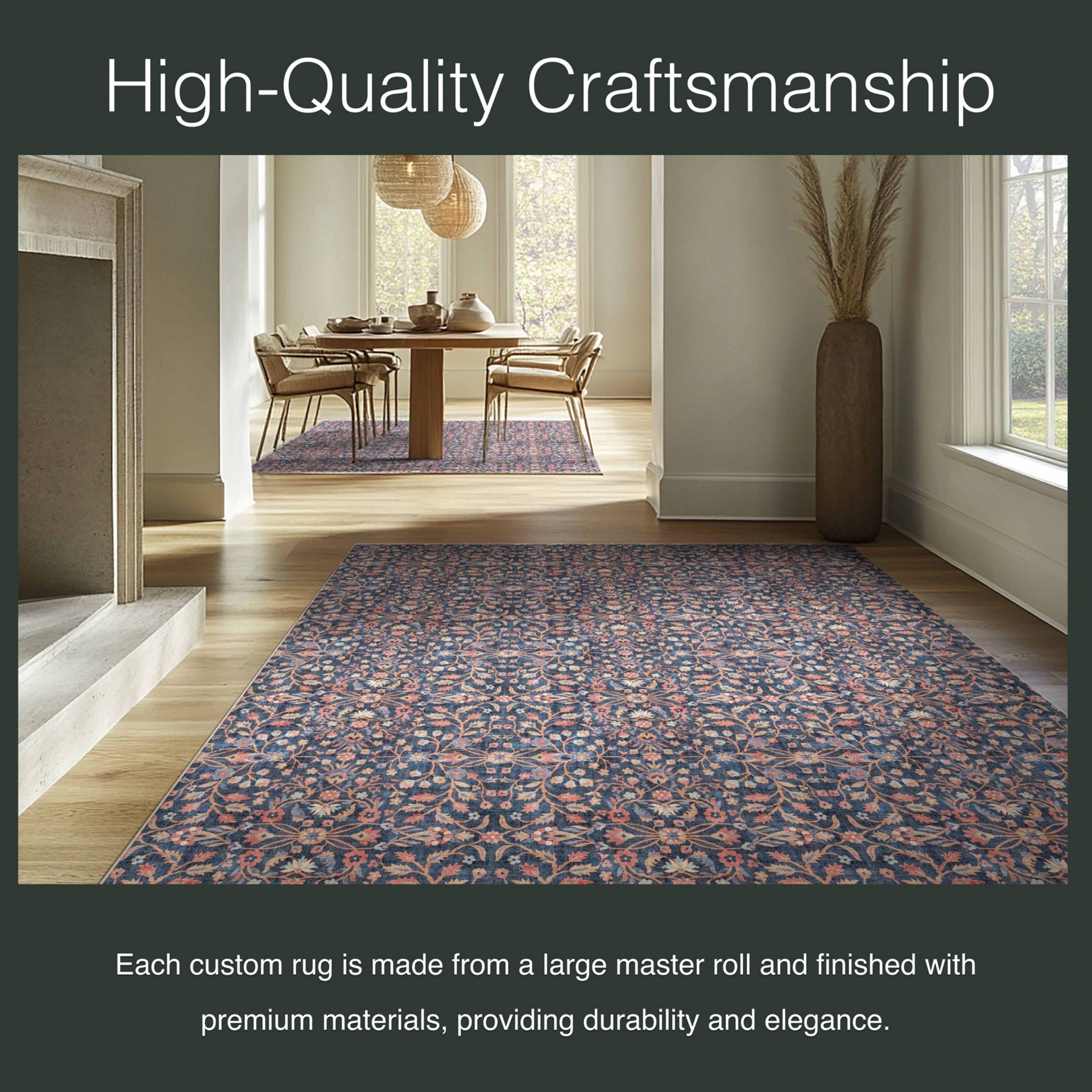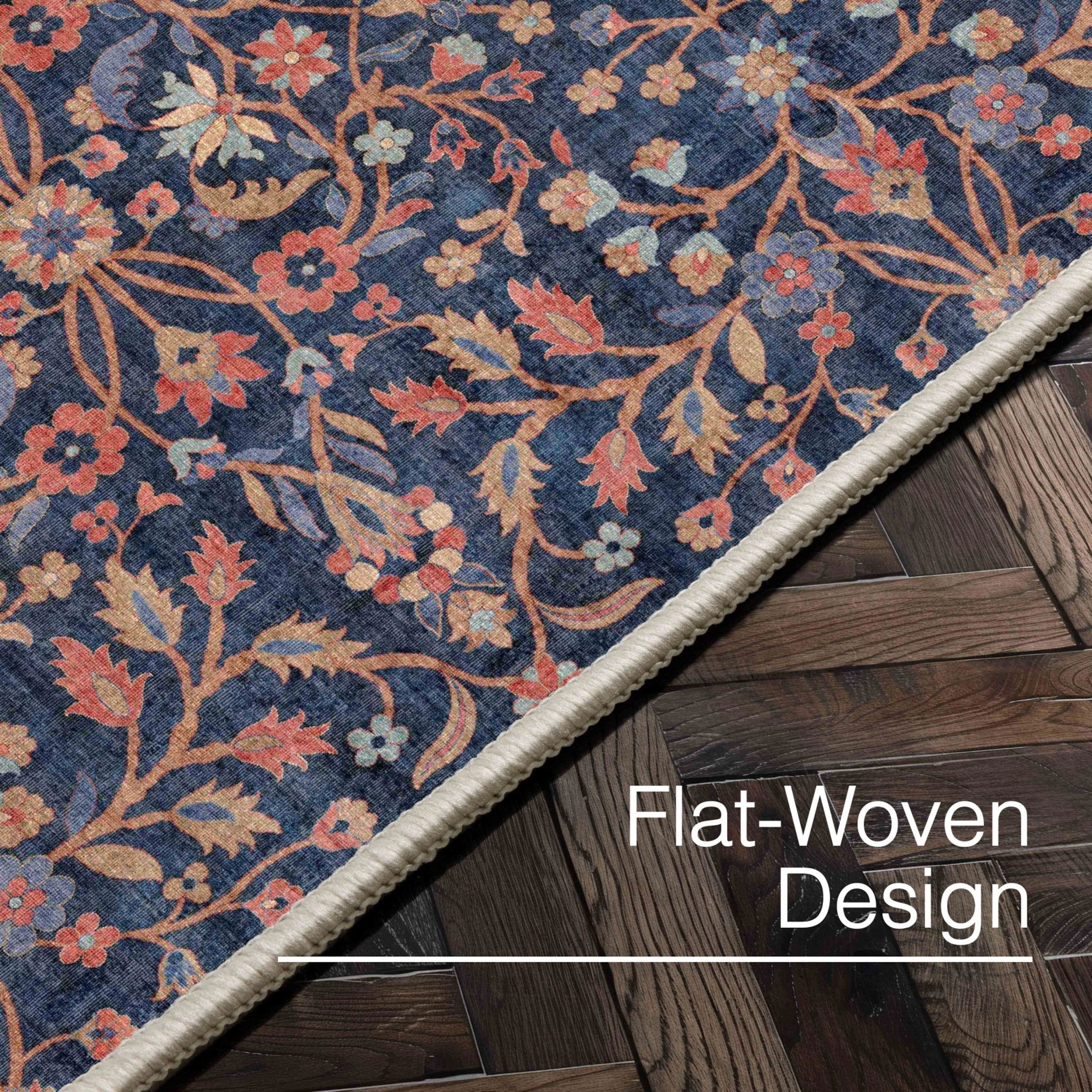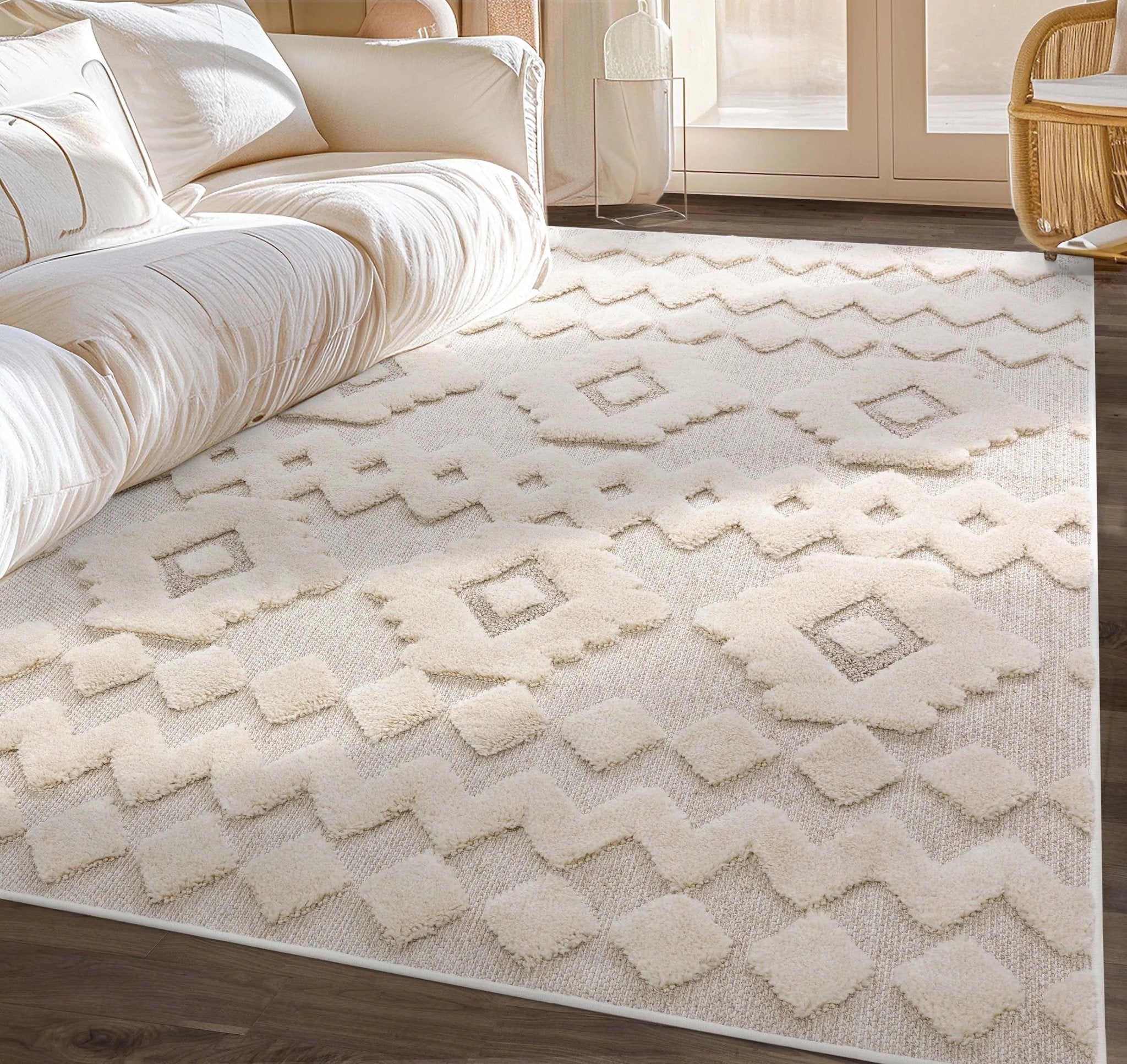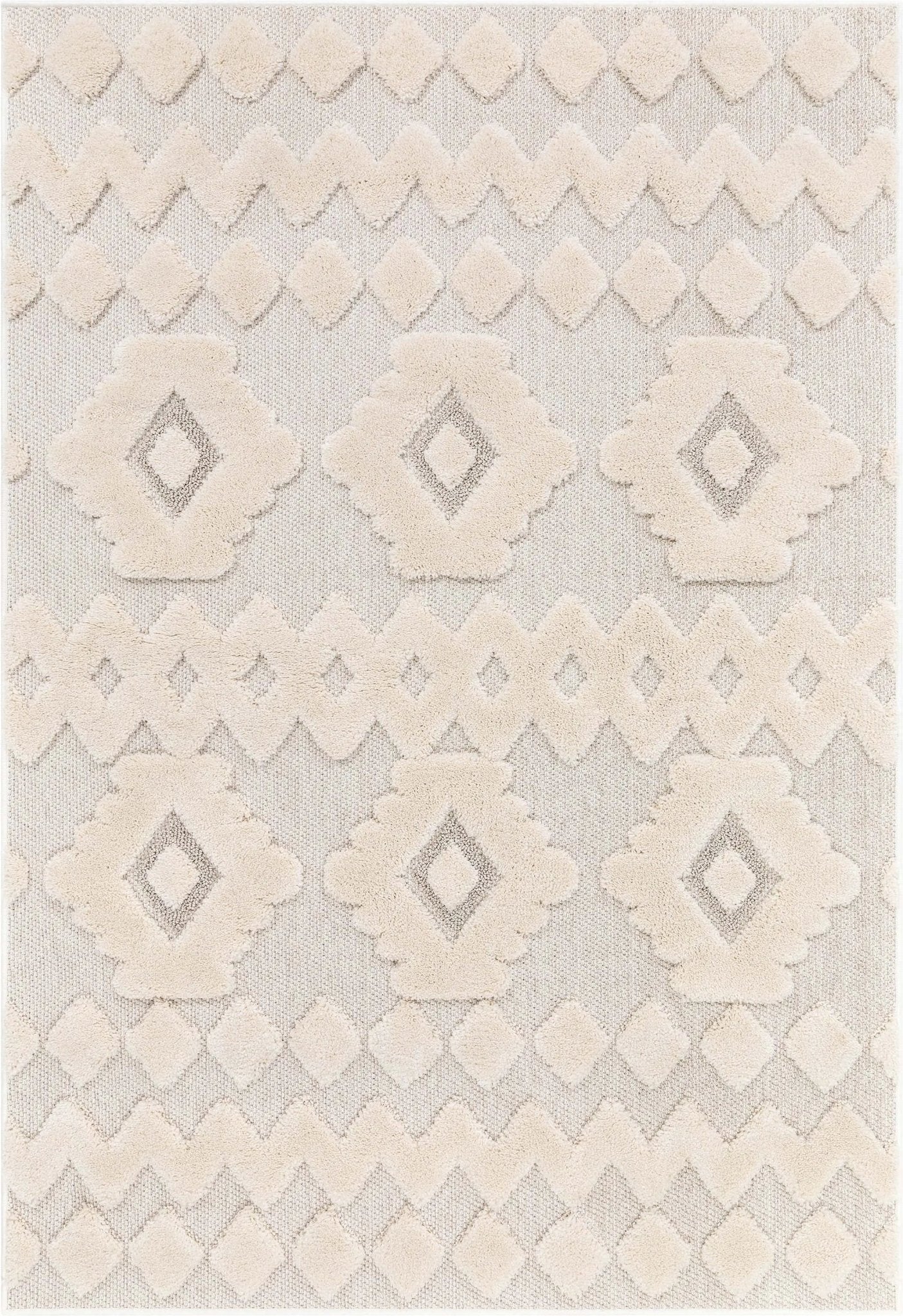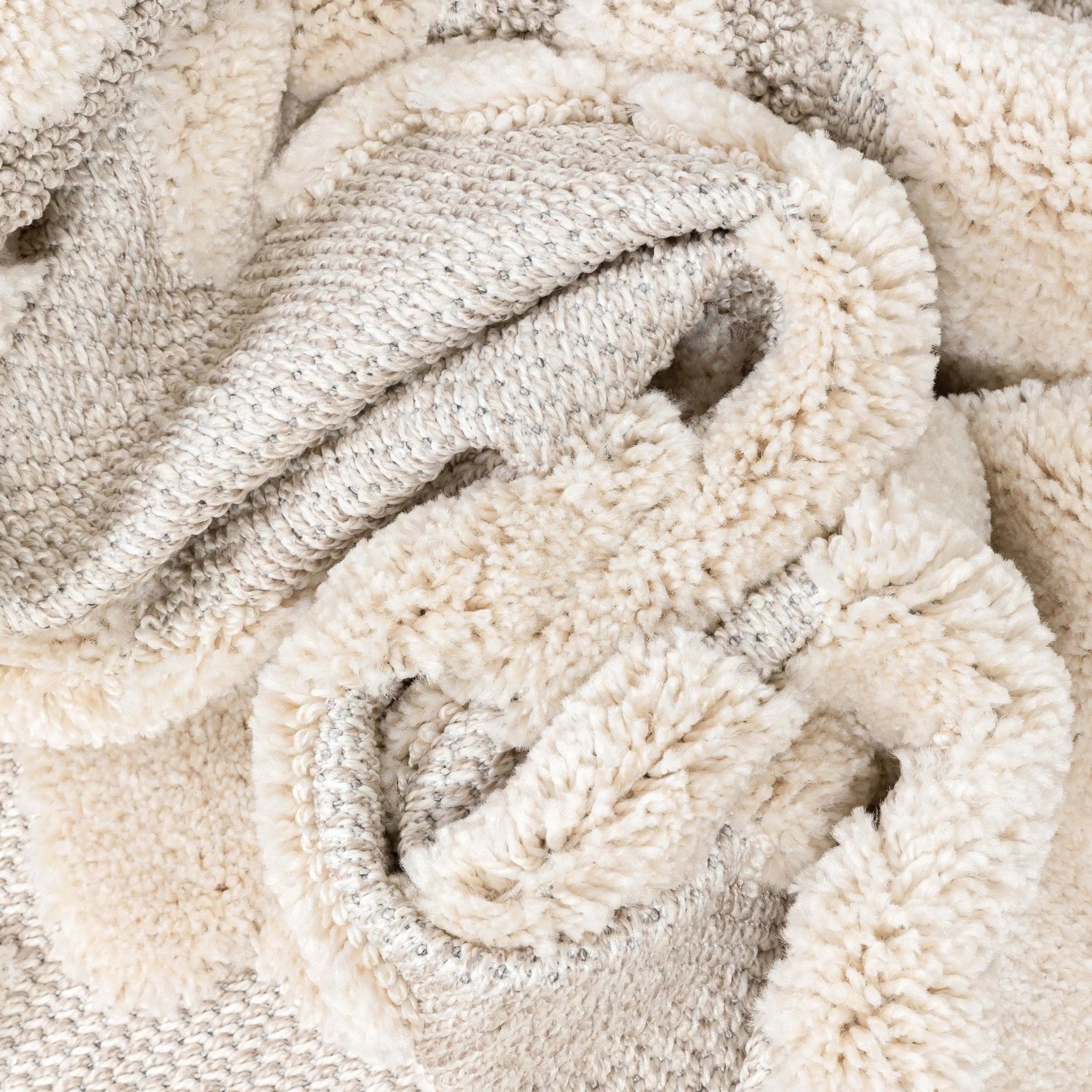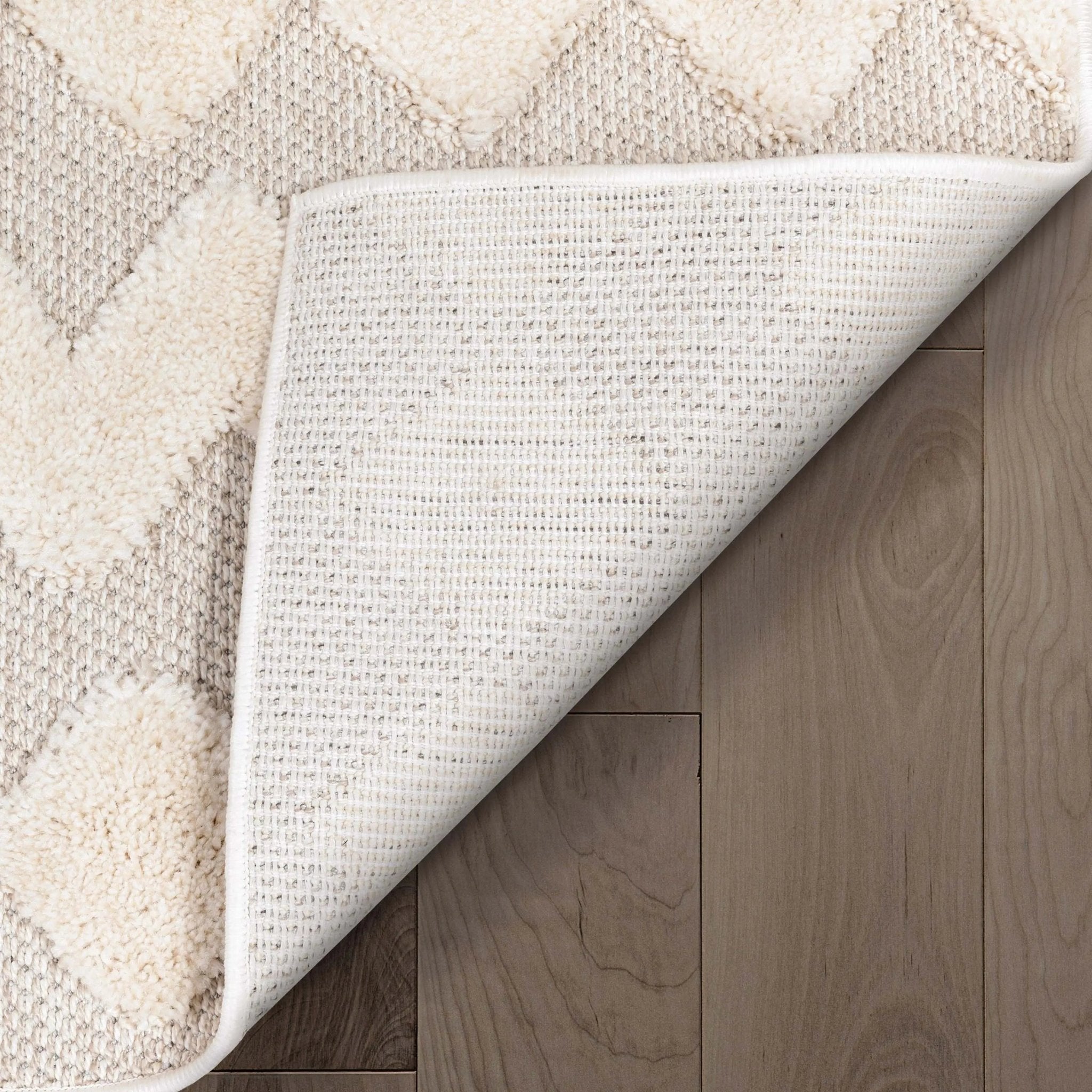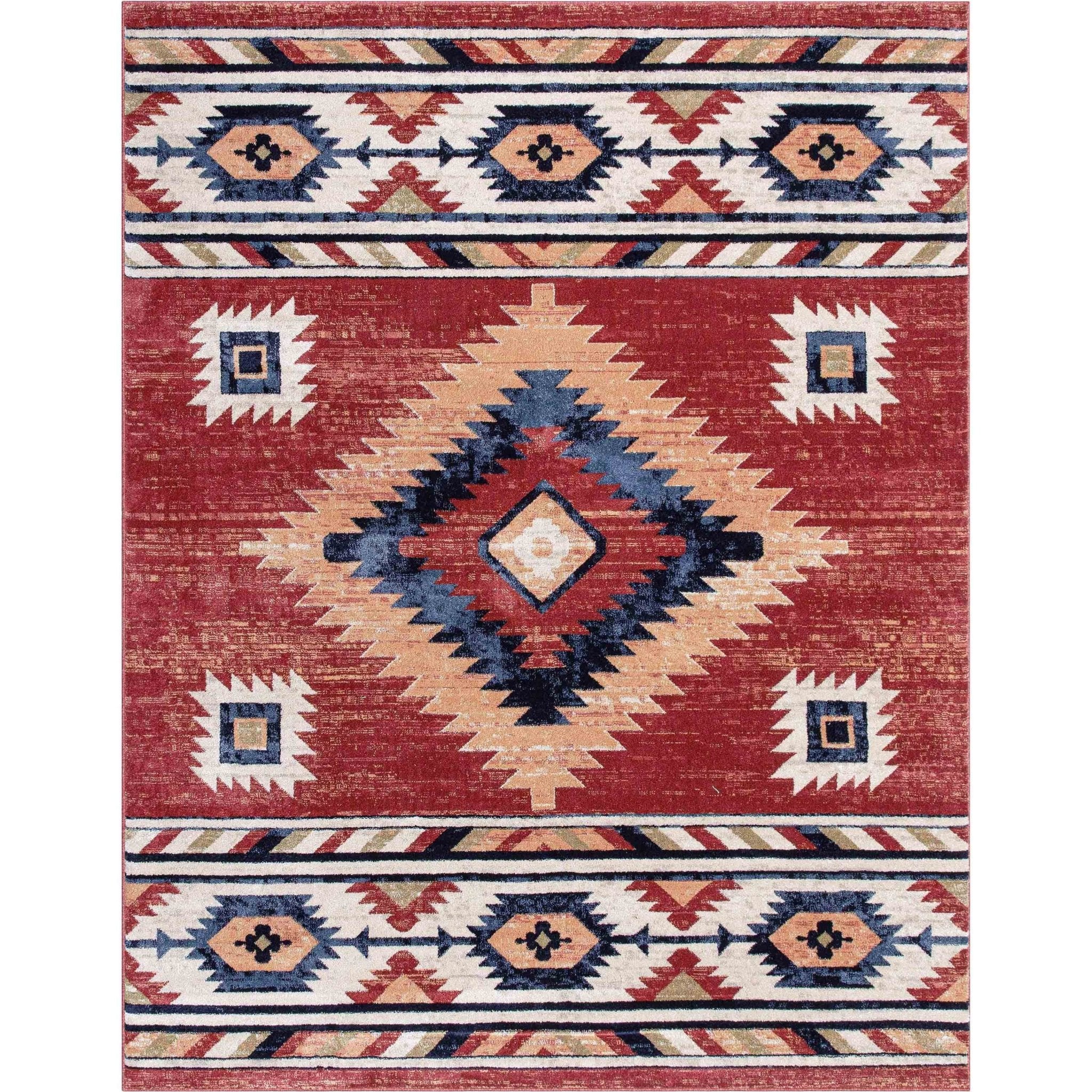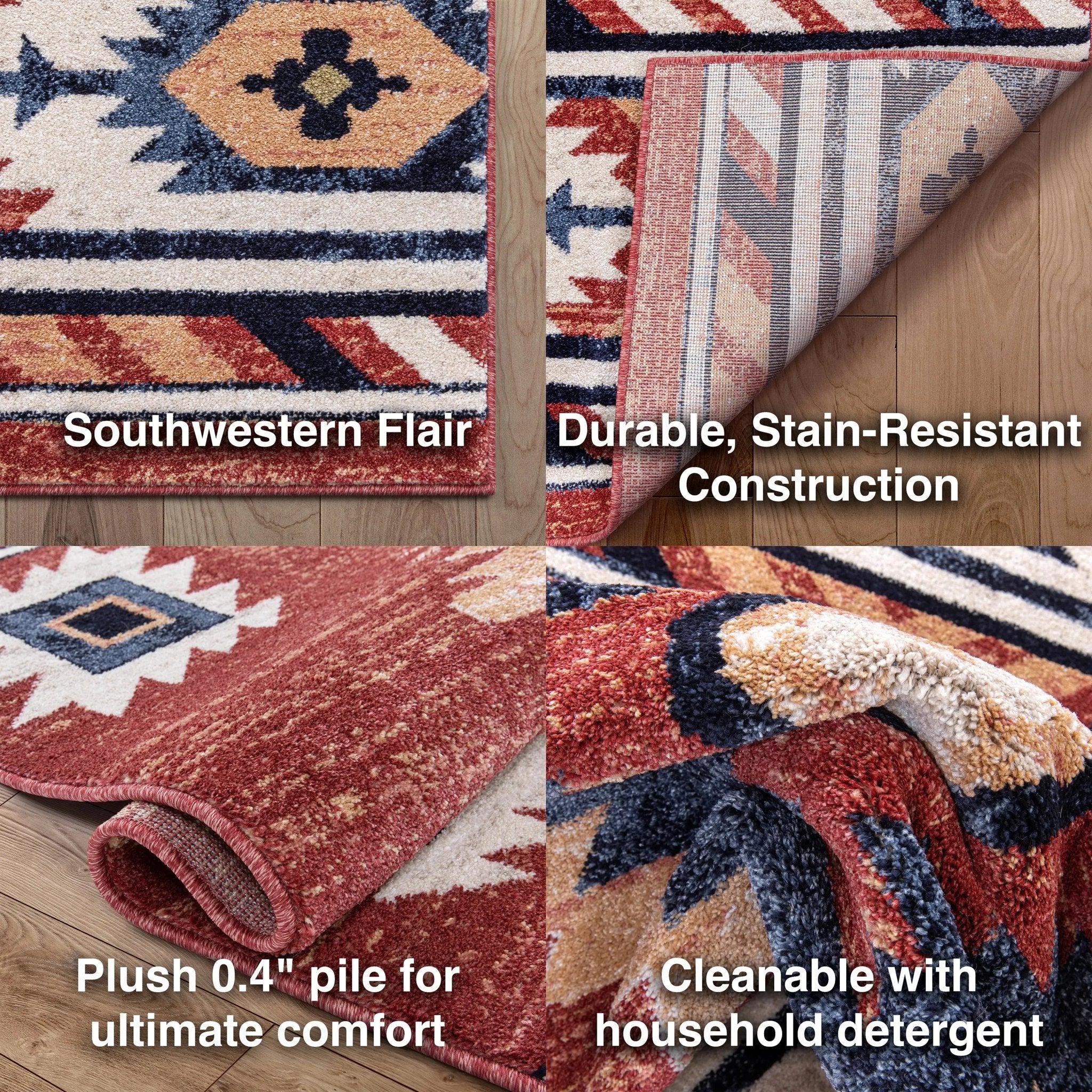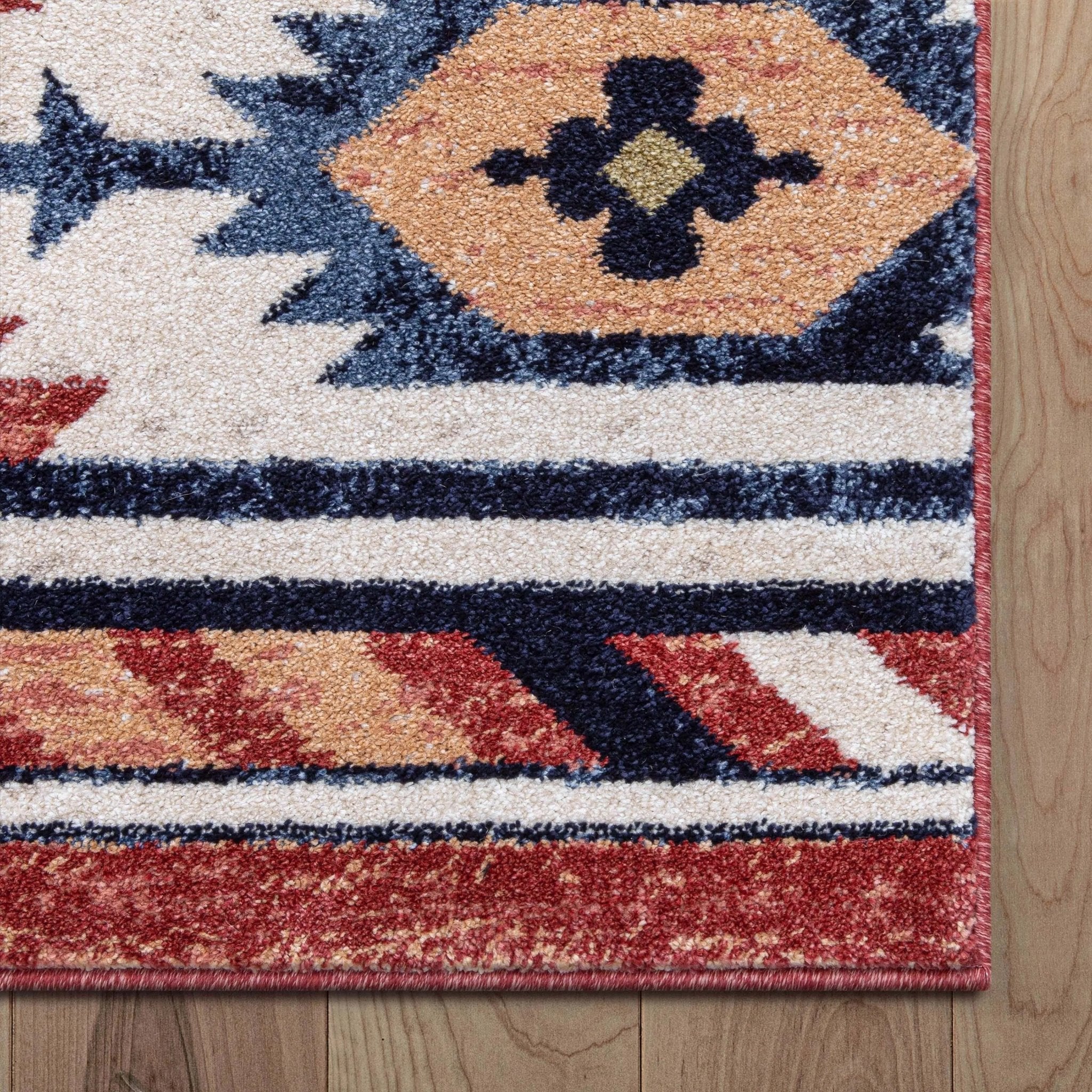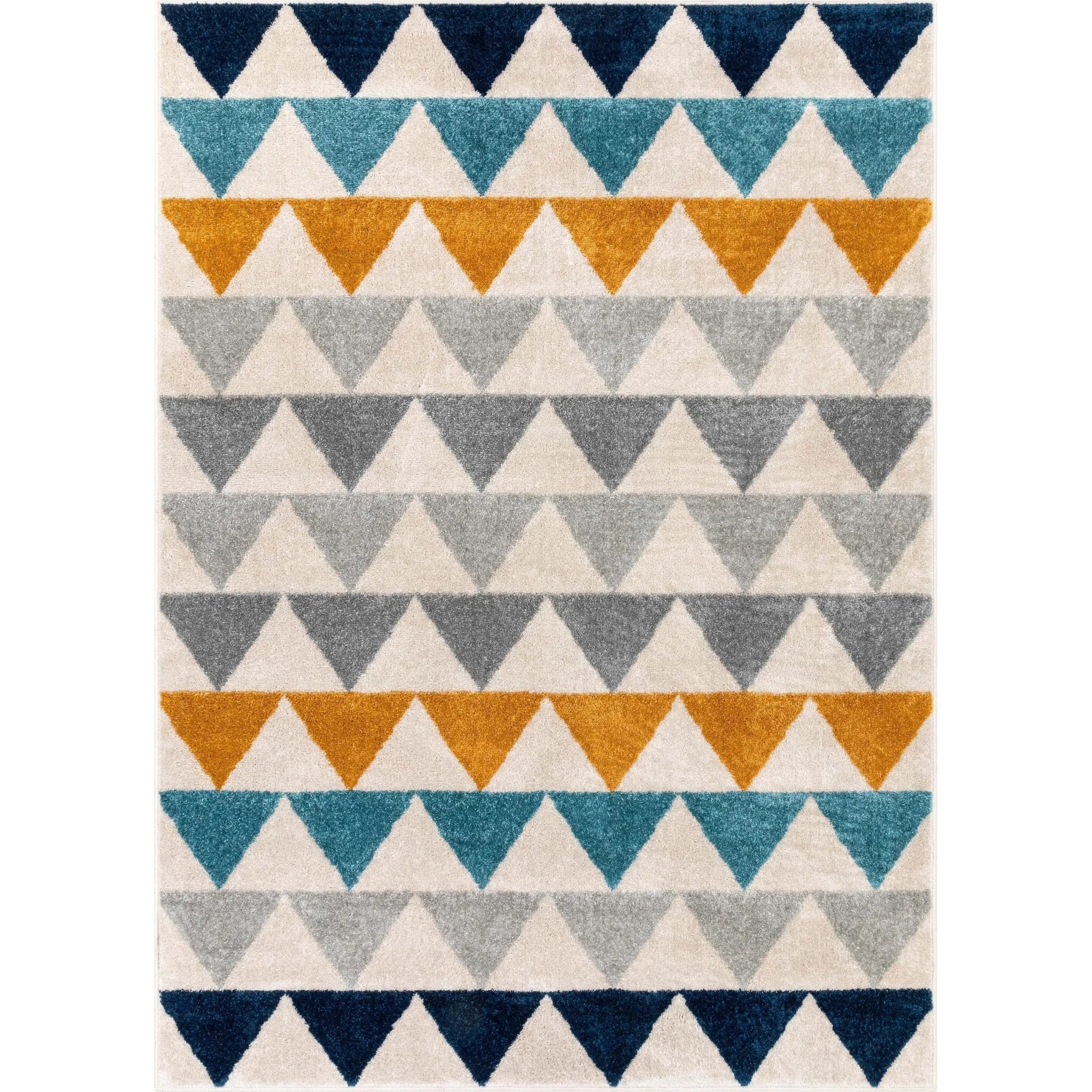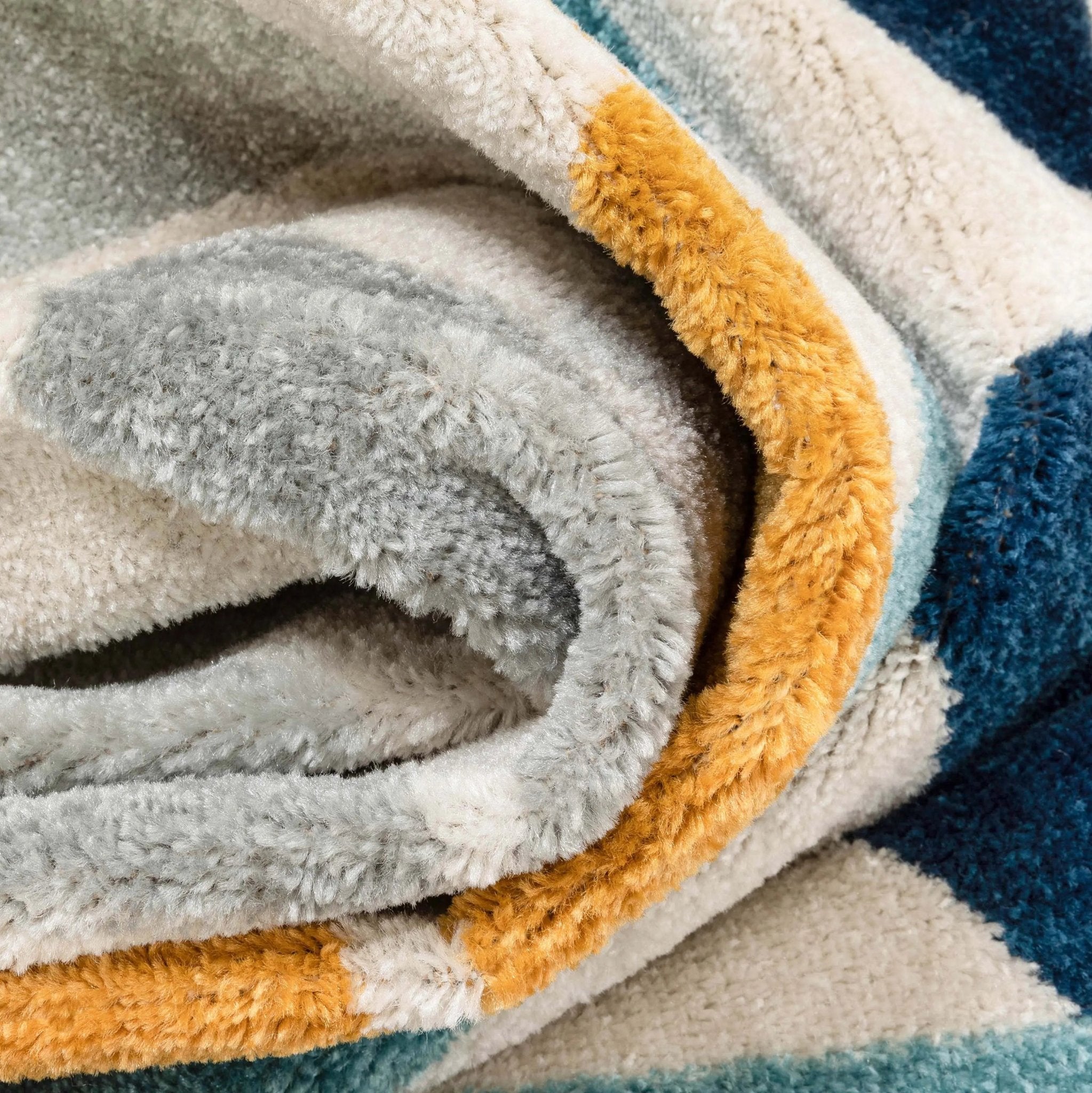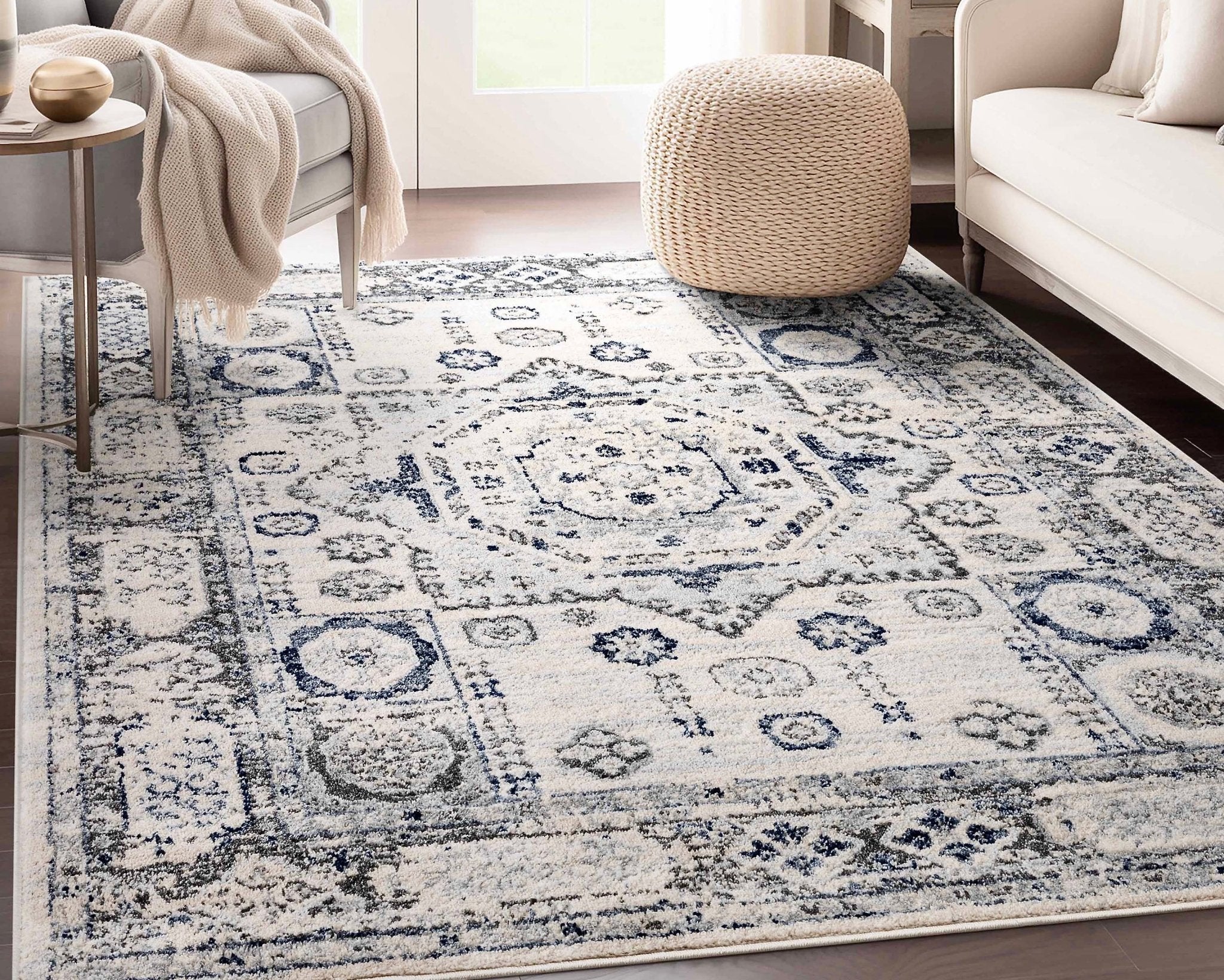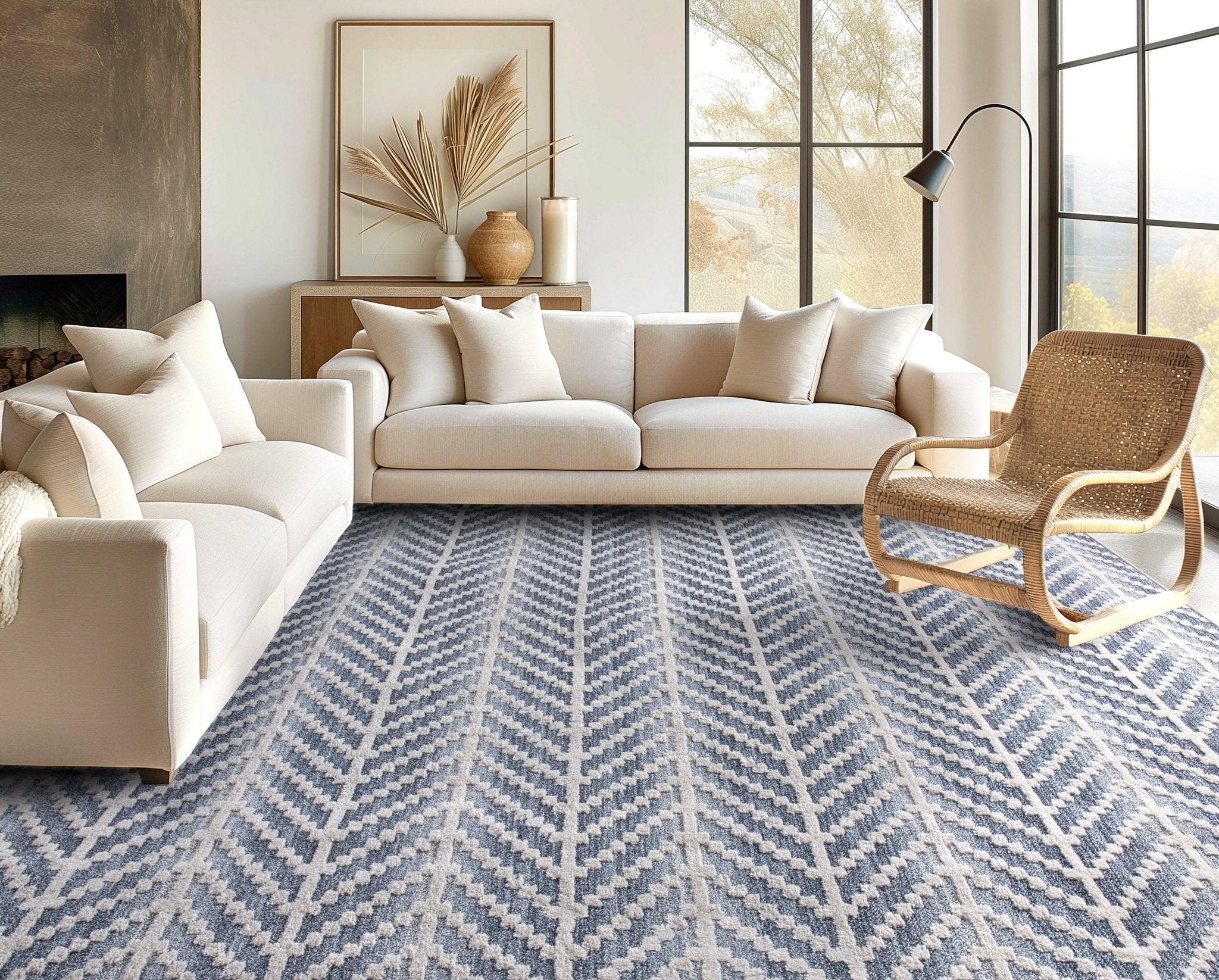
Choosing the Right Living Room Rug Matters
The right living room rug does more than soften footsteps. It shapes the room itself. A well-chosen rug
- Defines the room by anchoring the seating area and creating a natural focal point.
- Balances the layout so furniture feels connected instead of scattered.
- Adds comfort and style with softness, texture, and visual interest.
- Brings warmth and personality that makes the space more inviting.
Choosing the right living room rug can transform your space, making it feel polished, comfortable, and uniquely yours.
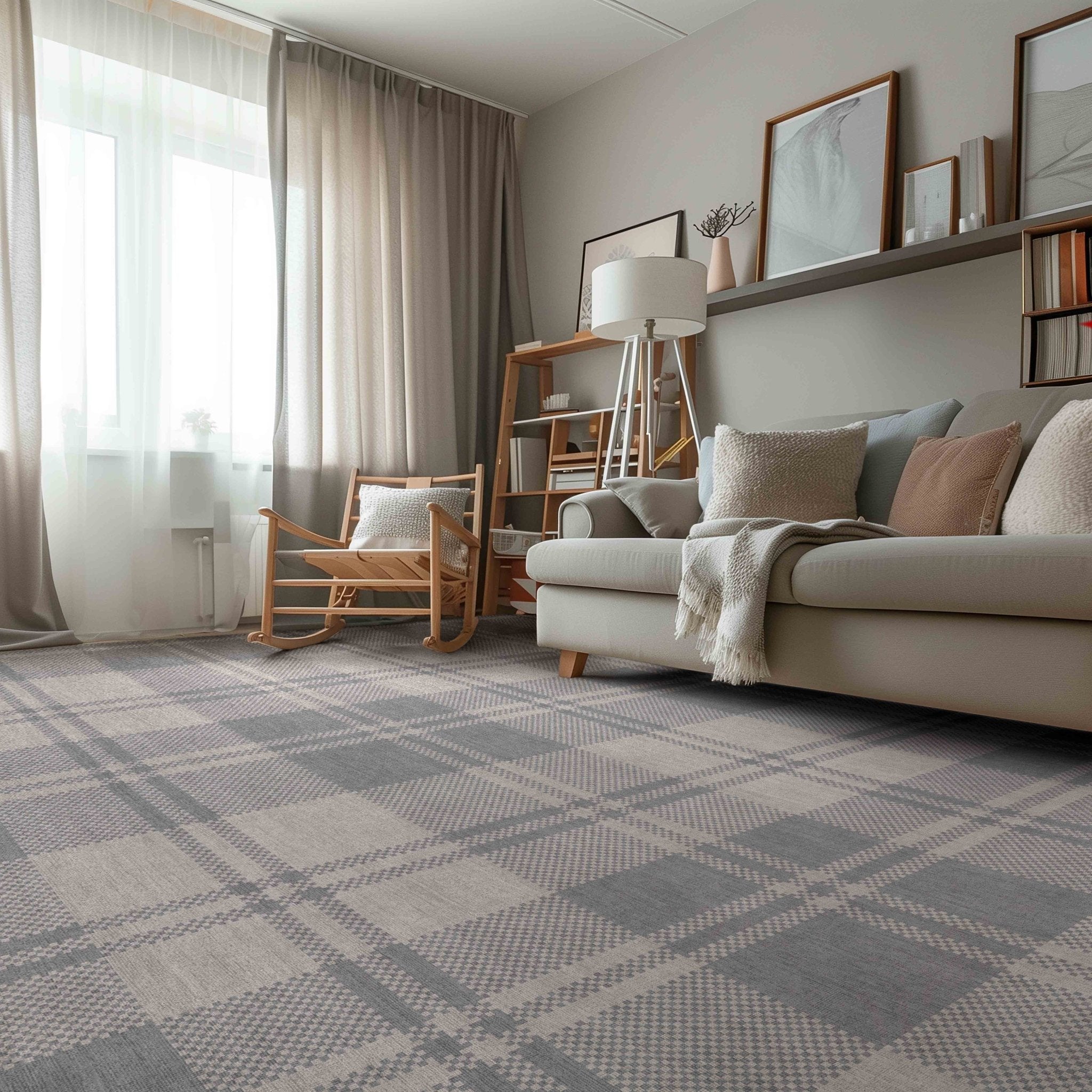
General Rules of Thumb for Living Room Rug Sizes
Not sure what size works best? Keep these guidelines in mind:
- Leave 8–18 inches of bare floor between the rug edges and your walls.
- All major furniture pieces in the seating area should sit fully or partially on the rug.
- Large living room rugs make small rooms feel bigger and more open.
- Rectangular rugs work for most layouts, but round rugs can soften the feel of a room.
How to Place a Rug in Your Living Room
The right living room rug placement depends on your seating configuration. Consider these furniture and rug layouts:
Add a rug pad to keep your living room rug in place & protect your floor.

Which Rug Shape Works Best in a Living Room?
- Rectangular: Most versatile and fits standard seating arrangements.
- Round: Adds softness and works well with curved furniture or in square living rooms.
- Square: Creates symmetry in balanced, even-shaped spaces.
Living Room Rug Textures
From calm neutrals to bold designs, the color and pattern of a living room rug can transform the mood and style of your space. Keep these points in mind:
Low-pile
Easy to clean and great for high-traffic spaces
Plush/High-Pile
Cozy and luxurious, ideal for comfort underfoot.
Natural Fibers
Wool for durability; jute for an organic, rustic feel.
Synthetic Fibers
Stain-resistant; easy to maintain; cost-friendly
Exploring Colors and Patterns
The color and pattern of your living room rug set the tone for the entire space. Light neutrals like beige, ivory, and gray create an airy, versatile backdrop, while rich hues such as navy, rust, or emerald bring depth and character. Patterns add the finishing touch: geometric living room rugs add structure, florals soften the look, and variegated designs help disguise everyday wear.
Popular Living Room Rugs at Well Woven
Jane Vintage Bohemian Aztec Tribal Blue Rug
Chiara Tribal Moroccan High-Low Flat-Weave Rug
Lea Crimson Traditional Southwestern Tribal Rug
Nova Ivory Modern Scandinavian Rug
FAQs About Living Room Rugs
Can a living room rug be smaller than the sofa?
Technically, yes your living room rug can be smaller than your sofa. But, it’s rarely the best choice for proportion or comfort. A rug that’s narrower than the sofa often looks undersized and makes the room feel disjointed. At minimum, your rug should extend beyond the sofa’s arms and allow the front legs of the sofa and chairs to rest on it. This helps visually anchor the seating area and prevents furniture from looking like it’s “floating” in the space.
What’s the best rug for high-traffic living rooms?
For busy living rooms where family and guests gather daily, choose a durable, low-pile rug that can withstand heavy foot traffic without showing wear quickly. Flatweave rugs, performance fibers like polypropylene, and indoor-outdoor rugs are excellent choices because they resist stains, hold their shape, and clean easily. Patterned rugs are especially practical, as they help conceal dirt and spills between cleanings.
Should all furniture in the living room sit on the rug?
Not always; it depends on your room size and design goals. The “all legs on” method creates a formal, unified look in large spaces and requires a larger rug (often 9x12 or bigger). The “front legs only” method is more budget-friendly and works well in smaller rooms, as it still connects the seating pieces visually while showing more of the flooring. Both approaches are correct; the key is consistency so your layout feels intentional.
Can I use two rugs in one living room?
Absolutely. Using two rugs can help define separate zones in an open-plan space, such as a seating area and a reading nook. The key is to make sure the rugs complement each other in color and style; they don’t have to match, but they should share at least one visual element, such as tone, texture, or pattern scale. You can also layer rugs for extra texture: place a smaller patterned rug over a larger neutral one to add depth and interest.
How do I choose a rug for a small living room?
In a small space, scale is everything. A rug that’s too small can make the room feel even smaller. Go for the largest rug your space can comfortably accommodate, leaving 8–12 inches of bare floor around the edges. Light colors and subtle patterns can open up the room visually, while vertical stripe patterns can elongate the space. Avoid rugs that stop short of your furniture grouping, as this can create a chopped-up look.
Can I put a rug over carpet in a living room?
Yes. Layering rugs over carpet is a great way to add style, texture, and definition to a living room. Choose a rug with a contrasting texture or color so it stands out against the carpet. For example, layer a plush rug over low-pile wall-to-wall carpet, or a flatweave over a plush carpet. Use a non-slip rug pad to keep the top rug from shifting and to maintain a smooth, safe surface.
How often should I replace my living room rug?
The lifespan of a living room rug depends on its material, quality, and usage. High-quality wool rugs can last decades with proper care, while synthetic rugs in busy households may need replacing every 4–6 years. Signs it’s time for a replacement include thinning fibers, persistent stains, or a rug that no longer suits your style or space. Regular cleaning and rotating your rug can extend its life.


